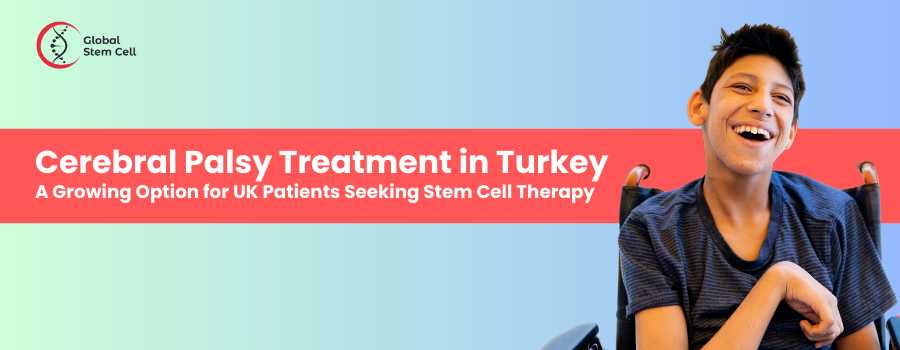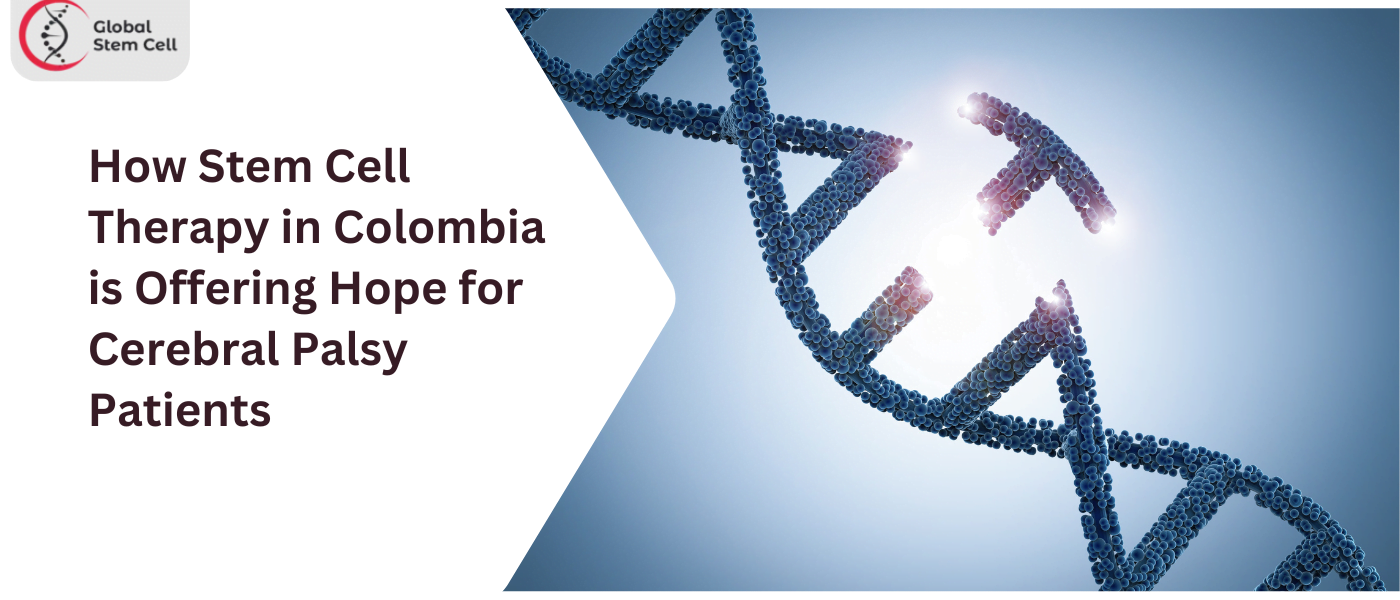
Cerebral palsy (CP) is a condition that affects the way people move and control their muscles. It happens because of problems in the brain that occur before, during, or shortly after birth. People with CP might have trouble walking, talking, or doing everyday tasks. Finding effective ways to help people with CP is really important.
In this guide, we’ll explore the best treatments available worldwide for cerebral palsy. We’ll talk about traditional treatments that many people know about, as well as new and exciting therapies that are changing the game.
We’ll also look at how some treatments focus on the whole person, not just their physical abilities. Finally, we’ll talk about some of the places around the world that are leading the way in treating CP. Let’s dive in to learn more about how we can help people with cerebral palsy live their best lives.
Table of Content
Understanding Cerebral Palsy
Cerebral palsy (CP) is a group of permanent movement disorders that appear in early childhood. It’s caused by abnormal development or damage to the parts of the brain that control movement, balance, and posture. CP affects muscle tone, movement, and motor skills, but the exact symptoms and severity vary widely from person to person.
Here are some key points to understand about cerebral palsy:
- Causes: The exact cause of CP isn’t always clear, but it often occurs due to brain damage that happens before, during, or shortly after birth. Some common causes include brain injury during birth, infections during pregnancy, genetic factors, lack of oxygen to the brain, or brain infections such as meningitis.
- Types: There are several types of cerebral palsy, classified based on the type of movement disorder and the parts of the body affected. These types include spastic CP (the most common type, characterized by stiff muscles), dyskinetic CP (involving involuntary movements), ataxic CP (affecting balance and coordination), and mixed CP (involving a combination of symptoms).
- Symptoms: Symptoms of cerebral palsy can vary widely depending on the type and severity of the condition. Common symptoms include muscle stiffness or weakness, poor coordination, tremors or involuntary movements, difficulty with balance and posture, and delays in reaching developmental milestones such as sitting up, crawling, or walking.
- Diagnosis: Diagnosis of cerebral palsy typically involves a thorough medical history, physical examination, and neurological evaluation. Imaging tests such as MRI or CT scans may be used to assess brain structure and identify any abnormalities.
Traditional Treatment Approaches
Cerebral palsy (CP) has long been managed through a variety of traditional treatment approaches aimed at improving mobility, communication, and overall quality of life for individuals affected by the condition. These approaches include:
- Physical Therapy (PT): Physical therapy is a cornerstone of CP treatment, focusing on improving muscle strength, flexibility, and mobility. Through exercises, stretches, and specialized techniques, physical therapists help individuals with CP enhance their motor skills and independence in activities of daily living.
- Occupational Therapy (OT): Occupational therapy focuses on improving the ability to perform everyday tasks, such as dressing, eating, and writing. Occupational therapists work with individuals with CP to develop strategies and adapt their environment to maximize independence and participation in daily activities.
- Speech Therapy: Speech therapy, also known as speech-language pathology, addresses communication challenges often associated with CP. Speech therapists help individuals improve speech clarity, language skills, and swallowing abilities through exercises, techniques, and assistive devices.
- Orthotics and Assistive Devices: Orthotic devices, such as braces or splints, can provide support and improve alignment for individuals with CP, enhancing mobility and reducing the risk of contractures. Assistive devices, including wheelchairs, communication aids, and adaptive equipment, help individuals with CP navigate their environment and engage in various activities.
- Medications: While medications do not cure CP, they may be prescribed to manage symptoms and associated conditions, such as spasticity, seizures, or pain. Muscle relaxants, anticonvulsants, and pain relievers are commonly used to alleviate discomfort and improve comfort.
- Surgery: In some cases, surgical interventions may be necessary to address issues such as contractures, spasticity, or skeletal deformities. Orthopedic surgeries, neurosurgical procedures, and selective dorsal rhizotomy are among the surgical options available to individuals with CP to improve function and mobility.
- Educational and Behavioral Interventions: Children with CP may benefit from educational interventions tailored to their specific needs, including individualized education plans (IEPs) and specialized schooling options. Behavioral interventions may also be employed to address cognitive and emotional challenges associated with CP.
Newest Treatment for Cerebral Palsy
Stem cell therapy is a promising area of research and treatment for various neurological conditions, including cerebral palsy (CP). While it’s still considered an experimental treatment and more research is needed to fully understand its effectiveness and safety for CP, there have been some encouraging developments in this field. Here’s an overview of stem cell therapy as a potential treatment for cerebral palsy:
What is Stem Cell Therapy?
Stem cell therapy involves the use of stem cells to replace or repair damaged cells or tissues in the body. Stem cells are undifferentiated cells with the ability to develop into different cell types. They can be derived from various sources, including embryonic tissue, adult tissue (such as bone marrow or adipose tissue), and umbilical cord blood.
Potential Mechanisms of Action: Stem cells have the potential to regenerate damaged tissue, modulate inflammation, promote neuroprotection, and stimulate the growth of new blood vessels. In the context of cerebral palsy, stem cell therapy aims to repair or replace damaged brain cells and improve neurological function.
Clinical Trials and Research: There have been several clinical trials and research studies investigating the use of stem cell therapy for cerebral palsy. These studies have explored various sources of stem cells, including umbilical cord blood, bone marrow, and adipose tissue-derived stem cells. While some studies have reported positive outcomes such as improvements in motor function, cognition, and quality of life, the results have been mixed, and more rigorous clinical trials are needed to establish the safety and efficacy of stem cell therapy for CP.
Challenges and Considerations: Despite the potential benefits, stem cell therapy for cerebral palsy faces several challenges and considerations. These include the need for standardized protocols for cell preparation and delivery, potential risks such as tumor formation or immune rejection, ethical concerns related to the use of embryonic stem cells, and the high cost of treatment.
Future Directions: Research in stem cell therapy for cerebral palsy is ongoing, with ongoing efforts to optimize treatment protocols, improve patient selection criteria, and address safety concerns. Advances in stem cell technology, such as the development of induced pluripotent stem cells (iPSCs) derived from a patient’s own cells, hold promise for personalized therapies tailored to individual needs.
Benefits of Stem Cell Treatment for Cerebral Palsy
Stem cell treatment for cerebral palsy (CP) holds promise for several potential benefits, although it’s important to note that research in this area is still ongoing, and definitive conclusions about its effectiveness and safety are yet to be established. Here are some potential benefits associated with stem cell treatment for CP:
- Regeneration of Damaged Tissue: Stem cells have the unique ability to differentiate into various cell types, including neurons and glial cells, which are essential components of the nervous system. By delivering stem cells to the damaged areas of the brain, there’s a potential for regeneration of damaged tissue and restoration of neural function.
- Neuroprotection: Stem cells can secrete factors that promote neuronal survival and protect against further damage. This neuroprotective effect may help prevent ongoing degeneration and improve the overall health and function of the brain in individuals with CP.
- Modulation of Inflammation: Inflammation plays a role in the progression of neurological disorders like CP. Stem cells have anti-inflammatory properties and can modulate the immune response, potentially reducing inflammation in the brain and creating a more favorable environment for healing and recovery.
- Improvement in Motor Function: Some studies have reported improvements in motor function following stem cell treatment for CP. This may include gains in muscle strength, coordination, balance, and mobility, leading to enhanced independence and quality of life for individuals with CP.
- Enhanced Neuroplasticity: Neuroplasticity refers to the brain’s ability to adapt and reorganize in response to injury or new experiences. Stem cell therapy may promote neuroplasticity by stimulating the formation of new neural connections and networks, facilitating functional improvements in individuals with CP.
- Potential for Personalized Treatment: With advances in stem cell technology, there’s the potential for personalized treatment approaches tailored to the specific needs of individual patients. This could involve using a patient’s own cells (autologous stem cell therapy) to minimize the risk of rejection or adverse reactions.
- Reduction in Secondary Complications: CP can be associated with secondary complications such as muscle contractures, joint deformities, and chronic pain. Stem cell therapy may help alleviate these complications by improving muscle tone, flexibility, and overall musculoskeletal function.
Best Hospitals for Cerebral Palsy Treatment
When seeking treatment for cerebral palsy (CP), it’s crucial to find reputable hospitals and clinics with expertise in neurological conditions and specialized therapies. Here are some notable hospitals and clinics known for their cerebral palsy treatment programs:
- Kobinia Med – Austria: Kobinia Med in Austria is recognized for its advanced neurological care and stem cell therapy programs. With a multidisciplinary team of specialists, including neurologists, physiotherapists, and rehabilitation experts, Kobinia Med offers comprehensive treatment options for individuals with cerebral palsy.
- Vega Stem Cell Clinic – Bangkok, Thailand: Vega Stem Cell Clinic in Bangkok, Thailand, is renowned for its cutting-edge stem cell therapies for various medical conditions, including cerebral palsy. Led by experienced medical professionals, Vega Stem Cell Clinic provides personalized treatment plans tailored to each patient’s needs, incorporating state-of-the-art stem cell technologies.
- Beike Biotechnology – Bangkok, Thailand: Beike Biotechnology is a leading provider of stem cell-based therapies with a presence in Bangkok, Thailand. The clinic specializes in regenerative medicine and offers innovative stem cell treatments for cerebral palsy aimed at promoting neurological repair and functional improvements.
- Stem Health – Guadalajara, Mexico: Stem Health, located in Guadalajara, Mexico, is known for its advanced stem cell therapies for neurological disorders, including cerebral palsy. The clinic utilizes state-of-the-art facilities and expertise in regenerative medicine to deliver personalized treatment protocols for patients seeking relief from CP symptoms.
- MexStemCells – Mexico City, Mexico: MexStemCells, based in Mexico City, Mexico, is a renowned center for stem cell therapy and research. With a focus on neurological conditions, MexStemCells offers comprehensive treatment options for cerebral palsy, including mesenchymal stem cell therapy and other regenerative approaches.
- Kyron Stem Cells – Colombia: Kyron Stem Cells, located in Colombia, specializes in stem cell-based therapies for a range of medical conditions, including cerebral palsy. With a team of experienced physicians and researchers, Kyron Stem Cells provides individualized treatment plans tailored to the unique needs of each patient.
Stem Cell Therapy for Cerebral Palsy – Success Story
Best Countries for Stem Cell Treatment for Cerebral Palsy
When considering stem cell treatment for cerebral palsy (CP), several countries stand out for their advanced medical facilities, experienced healthcare professionals, and innovative approaches to regenerative medicine. Here are some of the best countries for stem cell treatment for cerebral palsy, along with their notable features:
- Mexico: Mexico has emerged as a hub for stem cell therapy, offering cutting-edge treatments at renowned clinics and hospitals. With a favorable regulatory environment and access to state-of-the-art facilities, Mexico attracts patients from around the world seeking stem cell-based interventions for cerebral palsy. Clinics such as MexStemCells in Mexico City and Stem Health in Guadalajara are known for their expertise in neurological conditions and regenerative medicine.
- Thailand: Thailand is another destination known for its advanced stem cell therapies and medical tourism infrastructure. Clinics like Vega Stem Cell Clinic and Beike Biotechnology in Bangkok offer specialized treatment programs for cerebral palsy, leveraging the latest advancements in stem cell research and personalized care approaches. Thailand’s reputation for high-quality healthcare services and affordable treatment options makes it an attractive choice for patients seeking stem cell therapy abroad.
- Austria: Austria is recognized for its world-class healthcare system and expertise in neurology and regenerative medicine. Hospitals like Kobinia Med in Austria provide comprehensive treatment options for cerebral palsy, including stem cell therapy and multidisciplinary rehabilitation programs. Patients benefit from the country’s stringent medical standards, skilled healthcare professionals, and access to cutting-edge technologies.
- Colombia: Colombia has emerged as a destination for stem cell treatment, offering a range of innovative therapies for neurological disorders like cerebral palsy. Clinics such as Kyron Stem Cells in Colombia specialize in personalized treatment plans tailored to each patient’s needs, with a focus on regenerative approaches to promote neurological repair and functional improvement.
- India: India is known for its diverse healthcare landscape and affordability of medical services, making it an attractive option for patients seeking stem cell treatment for cerebral palsy. Leading hospitals and research institutions in cities like New Delhi, Mumbai, and Bangalore offer advanced stem cell therapies alongside traditional treatments, providing patients with a comprehensive approach to managing cerebral palsy symptoms.
Explore innovative stem cell treatments for cerebral palsy and discover new possibilities for improved quality of life. Contact us now to learn more and take the next step towards personalized care and regenerative therapy.





